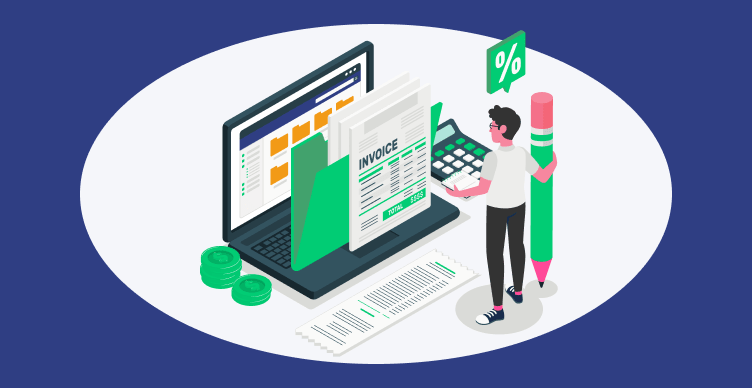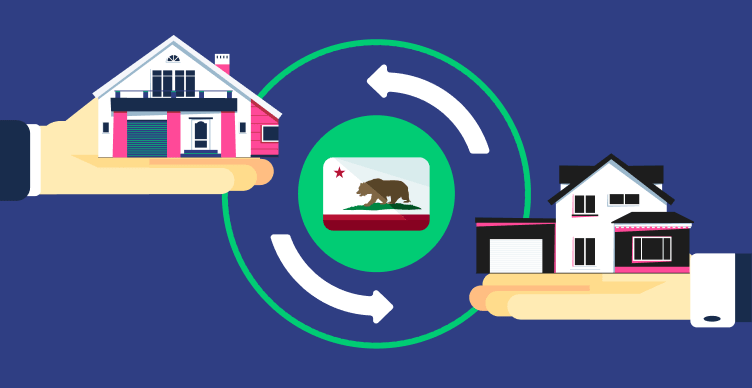As a real estate investor, understanding the right metrics is crucial for making informed decisions and maximizing returns on investment.
Tracking key performance indicators (KPIs) and analyzing real estate data can provide valuable insights into property performance, market trends, and potential risks.
In this blog post, we will explore the top 12 real estate metrics that every investor should know to succeed in the competitive real estate market.
1. Real Estate ROI (Return on Investment)
ROI, or Return on Investment, is a fundamental financial metric used to measure the profitability of an investment relative to its cost.
For real estate investors like you, ROI provides an accurate snapshot of how well your property is performing financially. It quantifies the return generated from your investment, helping you assess the efficiency and success of a particular venture.
The importance of ROI in real estate investing lies in its ability to provide insights into the profitability of various properties and investment strategies.
As an astute investor, you seek to optimize your resources and seek the best returns for your hard-earned capital. ROI acts as your compass, guiding you towards properties and ventures that align with your financial goals.
Calculating ROI for Different Types of Real Estate Investments
As a diverse field, real estate encompasses a wide array of investment opportunities, ranging from residential properties to commercial spaces.
For Residential Properties
The formula to calculate ROI for residential properties is straightforward:
ROI = (Net Profit / Total Investment Cost) x 100
The "Net Profit" here refers to the rental income earned after deducting all expenses associated with the property, such as property taxes, maintenance costs, insurance, and mortgage payments. The "Total Investment Cost" includes the initial purchase price, closing costs, and any renovations or improvements made to the property.
For Commercial Properties
The calculation of ROI for commercial properties follows a similar principle:
ROI = (Net Operating Income / Total Investment Cost) x 100
The "Net Operating Income" represents the revenue generated from the property after accounting for operating expenses like utilities, maintenance, and property management fees. The "Total Investment Cost" encompasses the acquisition cost and any capital expenditures related to the commercial property.
How to Use ROI to Compare Potential Investment Opportunities
With the ability to evaluate the financial performance of various real estate investments, ROI becomes a valuable tool for comparing and prioritizing opportunities.
When presented with multiple investment options, calculating and comparing ROI can help you identify which property has the potential to deliver higher returns.
You can make data-driven decisions and allocate your resources wisely by analyzing the ROI of different properties or investment strategies.
Keep in mind that ROI should not be the sole factor in your decision-making process but rather an integral part of a comprehensive analysis that considers other factors like market trends, location, and long-term growth potential.
2. Gross Rental Yield
Gross Rental Yield is a fundamental metric that helps you gauge the rental income relative to the property's value. To calculate the Gross Rental Yield, use the following formula:
Gross Rental Yield = (Annual Rental Income / Property Value) x 100
For example, if your annual rental income is $24,000 and the property's value is $400,000, the Gross Rental Yield would be 6%. This means your property generates a rental income equivalent to 6% of its value.
A higher Gross Rental Yield indicates a more lucrative investment opportunity, while a lower yield may warrant further analysis of the property's potential.
3. Net Rental Yield
While Gross Rental Yield provides a general overview of rental income, Net Rental Yield gives you a more accurate picture by factoring in expenses associated with property management. To calculate the Net Rental Yield, use this formula:
Net Rental Yield = [(Annual Rental Income - Annual Expenses) / Property Value] x 100
Expenses to consider include property taxes, insurance, maintenance costs, property management fees, and any other relevant expenses. For instance, if your annual rental income is $24,000, annual expenses amount to $8,000, and the property's value is $400,000, the Net Rental Yield would be 4%.
Comparing the Gross Rental Yield and Net Rental Yield can help you assess the impact of expenses on your rental income and make informed decisions about potential investments.
4. Vacancy Rate
Vacancy Rate is a critical metric that evaluates the property's occupancy and potential income loss. It represents the percentage of time the property remains unoccupied. To calculate the Vacancy Rate, use this formula:
Vacancy Rate = (Number of Vacant Units / Total Number of Units) x 100
For example, if you have 4 vacant units out of a total of 20 units, the Vacancy Rate would be 20%.
A high Vacancy Rate may signal issues with the property or location, leading to potential income loss. On the other hand, a low Vacancy Rate indicates a property with stable rental demand and consistent cash flow.
5. Real Estate Appreciation Rates
Real estate appreciation refers to the increase in the value of a property over time. When a property appreciates, it becomes more valuable than its original purchase price, resulting in potential capital gains for the investor.
How does real estate appreciation impact investment returns?
Real estate appreciation plays a crucial role in determining the overall profitability of your investment.
When the value of a property rises, your potential return on investment (ROI) increases, even if you haven't made any significant improvements or changes to the property itself. This natural appreciation can contribute significantly to your overall financial gain.
For example, let's say you purchase a property for $200,000, and over the course of five years, its value appreciates by 20%. The property is now worth $240,000.
If you decide to sell the property at this point, you'll make a profit of $40,000 (excluding any other costs associated with the sale). This is a simple illustration of how real estate appreciation impacts your investment returns positively.
Analyzing historical appreciation trends to predict future property value
One of the key aspects of real estate appreciation is analyzing historical trends in property values to make educated predictions about the future.
While no prediction can be entirely accurate, historical data can offer valuable insights into potential growth patterns.
Here's how you can use historical appreciation trends to inform your investment decisions:
- Market Research: Conduct thorough research on where you plan to invest in the local real estate market. Look at historical price trends for similar properties in the area over the past decade or longer. This will show you how properties in that location have appreciated over time.
- Location Matters: Keep in mind that appreciation rates can vary significantly based on the property's location. Properties in high-demand areas or regions experiencing economic growth tend to have higher appreciation rates than properties in stagnant or declining areas.
- Economic Factors: Consider the economic factors that influence property values, such as job growth, population trends, infrastructure development, and overall economic stability of the region.
- Long-Term Vision: Real estate investment is generally a long-term venture. While short-term market fluctuations are inevitable, looking at long-term historical appreciation trends can provide a more accurate assessment of a property's potential.
- Consult Professionals: Seek advice from experienced real estate agents, market analysts, and property appraisers who can offer valuable insights into local market conditions and historical trends.
6. Cash Flow Analysis
Put simply; cash flow refers to the money left over after deducting all expenses from the rental income.
It is the lifeblood of your investment, as it indicates whether your property is generating profits or incurring losses.
Positive Cash Flow
You have positive cash flow when your rental income exceeds your operating expenses and mortgage payments.
This is the ideal scenario for any real estate investor.
Positive cash flow not only means you are covering your property expenses, but you are also left with surplus money that can be reinvested, saved, or used to expand your real estate portfolio.
It provides a safety net, especially during market downturns or unexpected expenses, allowing you to easily weather financial challenges.
Positive cash-flow can be beneficial for you in the following ways:
- Financial Stability: Positive cash flow ensures your property remains self-sustaining, reducing the need for personal funding to cover expenses.
- Opportunity for Growth: The surplus cash can be utilized to acquire more properties, diversifying your portfolio and increasing potential returns.
- Risk Mitigation: It acts as a buffer against unforeseen expenses or temporary vacancies, reducing financial stress.
Negative Cash Flow
On the other hand, negative cash flow occurs when your property's expenses exceed the rental income.
While it may seem undesirable, negative cash flow isn't always a red flag.
Some real estate investors intentionally pursue negative cash-flowing properties, especially when aiming for long-term appreciation, tax benefits, or when they anticipate market changes that could turn the property into a positive cash-flow asset.
Here are some risks you should be aware of with negative cash flow:
- Short-Term Strain: Negative cash flow may require you to supplement the property expenses from your personal finances until the investment becomes profitable.
- Market Volatility: Negative cash flow can become a burden in a declining market or during extended vacancies.
- Exit Strategy Considerations: If your investment heavily relies on appreciation, you might face challenges when selling the property if the market doesn't perform as expected.
7. Cap Rate (Capitalization Rate)
Cap Rate is a fundamental metric used to assess the profitability and risk of a property by comparing its net operating income (NOI) to its current market value.
Cap Rate Formula and Calculation
The Cap Rate formula is quite straightforward:
Cap Rate = Net Operating Income (NOI) / Current Market Value
To calculate the Cap Rate, you need to determine the property's NOI, which is the income generated by the property after deducting operating expenses but before accounting for financing costs and taxes.
Then, divide the NOI by the property's current market value, which can be its purchase price or the appraised value.
8. Debt Service Coverage Ratio (DSCR)
The Debt Service Coverage Ratio (DSCR) is a critical metric that provides insights into whether a property's rental income is sufficient to cover its debt payments.
Let's delve into what DSCR entails and how you can use it to make informed investment decisions.
Understanding Debt Service Coverage Ratio (DSCR)
DSCR is a financial metric used to measure the cash flow available to cover a property's debt obligations. In simpler terms, it determines if the property generates enough income to make its mortgage payments and other debt-related expenses.
The formula for calculating DSCR is as follows:
DSCR = Net Operating Income (NOI) / Total Debt Service
- Net Operating Income (NOI): This represents the property's total income after deducting operating expenses but before accounting for debt payments.
- Total Debt Service: This includes the principal and interest payments on mortgages or other debts associated with the property.
9. Average Days on Market (DOM)
DOM refers to the average number of days that properties stay on the market before being sold.
This metric is a valuable indicator of market activity and can shed light on the level of property demand in a specific area.
When DOM is low, it indicates a fast-paced market with high demand, where properties are selling quickly. Conversely, a high DOM suggests a slower market, potentially indicating less demand or an oversupply of properties.
As an investor, paying attention to DOM can help you gauge the overall health of the real estate market in a particular location.
Rapidly decreasing DOM may signify a seller's market, where sellers have the advantage, while an increasing DOM might suggest a buyer's market, presenting more opportunities for negotiation and potentially better deals.
Using DOM to Determine the Best Time to Buy or Sell
Knowing the DOM can be a powerful tool in deciding the optimal time to buy or sell a property. When the DOM is low, it implies that properties are selling swiftly, and competition among buyers may be fierce.
In such a scenario, acting quickly and making competitive offers can be essential to secure a desirable property.
On the other hand, in a market with a high DOM, properties tend to take longer to sell, giving you, as an investor, more negotiation leverage. Sellers may be more motivated to make a deal, and you may have a better chance of negotiating a favorable purchase price.
As you navigate the real estate landscape, keep an eye on DOM trends in your areas of interest. Monitoring changes in DOM over time can provide insights into shifting market conditions, helping you fine-tune your investment strategies.
10. Price-to-Earnings Ratio (P/E Ratio)
Just like in the stock market, the P/E Ratio in real estate helps you gauge the relationship between the property's market price and its income-generating potential.
To calculate the P/E Ratio for a real estate property, you'll need two primary pieces of information: the property's market price (purchase price) and its net operating income (NOI).
P/E Ratio = Property's Market Price / Net Operating Income (NOI)
- The Market Price: This is the amount you paid to acquire the property, including any associated costs like taxes and closing fees.
- Net Operating Income (NOI): The NOI represents the property's income after deducting operating expenses like property taxes, insurance, maintenance, and management fees. NOI is a critical component of real estate cash flow analysis.
Interpreting the P/E Ratio for Property Valuation
Once you've calculated the P/E Ratio, it's essential to interpret the result to make an informed investment decision.
A low P/E Ratio suggests that the property's market price is relatively low compared to its income-generating potential.
This could indicate an undervalued property and may present an attractive investment opportunity.
However, it's crucial to investigate why the ratio is low; there could be underlying issues affecting the property's income.
A high P/E Ratio indicates that the property's market price is relatively high compared to its income. This might suggest that the property is overvalued or generating lower income than expected.
Proceed with caution and conduct thorough due diligence to ensure the property's potential justifies the higher price.
To get the most value from the P/E Ratio, compare it to similar properties in the same area. This benchmarking helps you gauge how the property performs relative to others in the market.
11. Real Estate Turnover Rate
The turnover rate refers to the frequency at which tenants leave your property and are replaced by new ones. Understanding this metric and its significance in rental property management is crucial for maintaining a profitable investment.
Turnover Rate and Its Significance
The turnover rate is typically expressed as a percentage and is calculated by dividing the number of tenant move-outs during a specific period (usually a year) by the total number of units in your property.
For example, if you have 10 units and 2 tenants move out in a year, the turnover rate would be 20% (2 move-outs ÷ 10 total units x 100).
High turnover rates can have significant implications for your investment's profitability. Frequent tenant turnover means increased vacancy periods, leading to potential income loss and higher expenses for marketing, cleaning, and preparing the unit for new tenants.
Moreover, frequent move-outs can also result in wear and tear on the property, requiring more frequent maintenance and repairs.
12. Real Estate Leverage
As a real estate investor, you've likely heard the term "leverage" thrown around quite often.
Leverage is a powerful tool that can amplify your investment returns, but it's essential to understand both its benefits and risks before incorporating it into your investment strategy.
Understanding Real Estate Leverage
Leverage in real estate refers to using borrowed money, typically in the form of a mortgage, to finance a property purchase. By leveraging debt, you can control a more substantial asset with a smaller initial investment. For instance, if you have $50,000 and use it as a 20% down payment on a $250,000 property, you effectively control a $250,000 asset with only $50,000 of your own money.
Benefits of Real Estate Leverage
- Increased Return on Investment (ROI): One of the significant advantages of leveraging debt is that it has the potential to magnify your ROI. When the property appreciates, you benefit from the increase in property value and the appreciation of the entire property value, not just your initial investment.
- Diversification Opportunities: By leveraging funds, you can spread your investments across multiple properties or markets, diversifying your real estate portfolio. Diversification helps reduce the impact of a single property's poor performance on your overall investment strategy.
- Preserving Liquidity: Leverage allows you to preserve your cash reserves, which can be used for other investment opportunities or emergencies. Instead of tying up all your funds in a single property, you can maintain liquidity and flexibility.
Risks of Real Estate Leverage
- Increased Financial Risk: When you leverage debt to finance a property, you take on additional financial risk. If the property's value declines, you still have to repay the mortgage, which may result in negative equity (owing more than the property is worth).
- Interest and Debt Servicing Costs: Borrowing money incurs interest and debt servicing costs. If the rental income from the property doesn't cover these expenses, it can strain your cash flow and affect the property's profitability.
- Market Volatility: Real estate markets can experience fluctuations. A market downturn could lead to decreased property values and potentially put leveraged properties at higher risk of foreclosure.
Bottom Line
In conclusion, mastering these top 12 real estate metrics empowers investors with the tools to make well-informed decisions, identify lucrative opportunities, and mitigate potential risks.
Are you ready to elevate your real estate investment game with data-driven strategies? Check out the recent trends in the industry!






.svg)






































































































.svg)
























